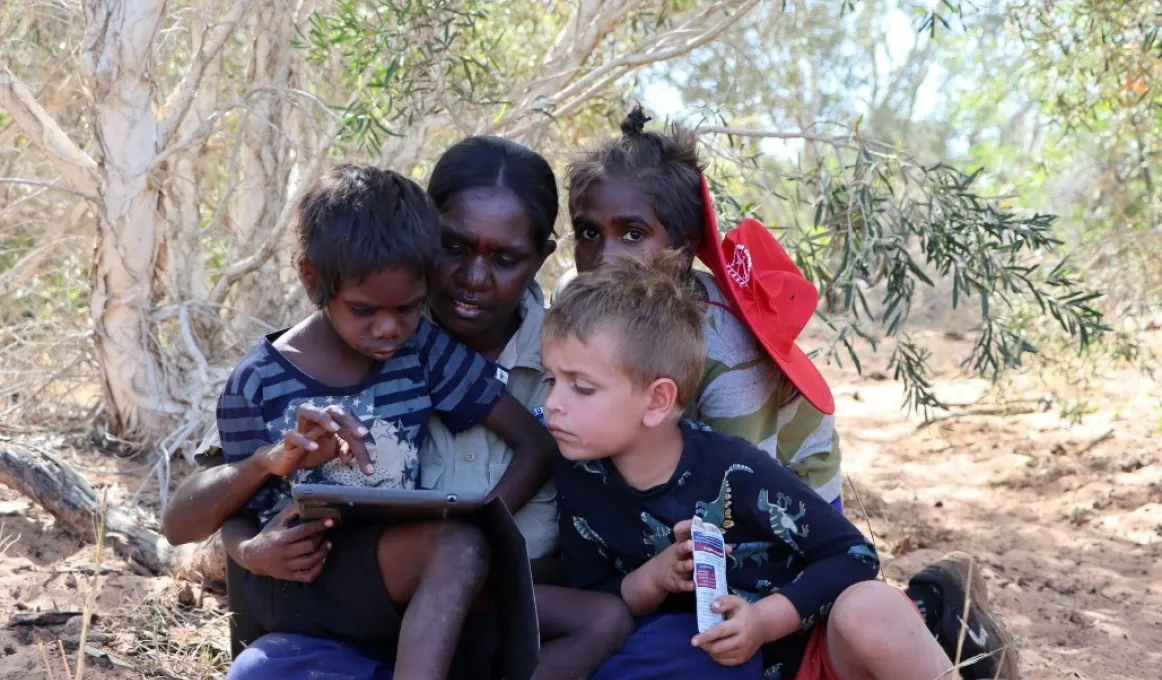Learning two-way science with Kimberley schools

Local school students from the Kimberley region had the opportunity to learn ‘2WS’, or two-way science. In the Kimberley’s Great Sandy Desert Region, the Ngurrara Women Rangers have been working with Yakanarra Community School.
Local school students from Yakanarra Community School had the opportunity to learn ‘2WS’, or two-way science, from the Ngurrara Women Ranger group in the Great Sandy Desert region of the Kimberley.
In-classroom and on-Country learning teaches students about the use of camera traps and surveys as well as native and feral animals.
2WS teaching and learning happens when First Nations traditional knowledge is used to teach the science curriculum.
During the program, the students were able to learn about the local Walmajarri names for the animals they might see in the camera traps, as well as predict the numbers of animals observed, analyse the results and categorise them into different species and if they were native or feral animals. The students were also inspired to produce a mural of the animals they saw through the survey.
Local Senior Walmajarri Elder and language teacher Jessica Moore said, ‘I reckon this project was really good because they are learning about different animals that live out bush and the ones that we don’t see them much; the ones that come out at night.’
Elders also did a smoking ceremony on Country and told stories about local tribes coming together to exchange gifts and perform traditional dances.
‘I also liked that we did culture way by setting up a smoking ceremony before we went out onto Country. The rangers showed the kids how to set up the camera the proper way so they can’t be damaged,’ said Jessica.
Jessica thinks the project will expand and take on more students.
‘This project might get better and better by bigger kids keeping on using that equipment on their own and taking more photos,’ she said.
The experience taught the students a lot about native and feral animals and the vital work that the Ngurrara Women Rangers do with the hope that they might also become Rangers to protect Country.
Ngurrara Ranger Sumayah Surprise said the program was a total success.
‘The kids learnt so quickly about setting up the camera baits and buttons in the different locations and water holes. It was very impressive to see how well language translated into some of the scientific words,' Sumayah said.
The kids also learnt to identify what was native and not native and how to identify the tracks of different animals on the night walks.’
The 2WS project is supported by the Kimberley Land Council and targets school students in remote Aboriginal communities. By providing culturally focused learning activities aligned with the Western Australian curriculum and the CSIRO two-way science model, the Kimberley Land Council aim to support intergenerational knowledge transmission, keep culture and Country healthy and improve student engagement, achievement and wellbeing.
The Kimberley two-way science pilot is funded through the Indigenous Advancement Strategy 1.2 Children and Schooling.